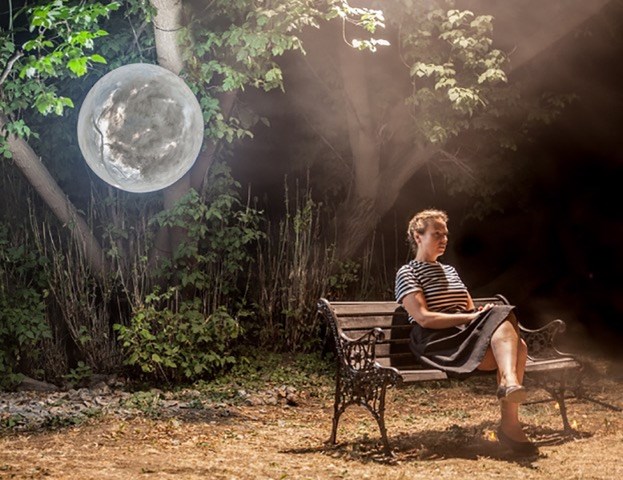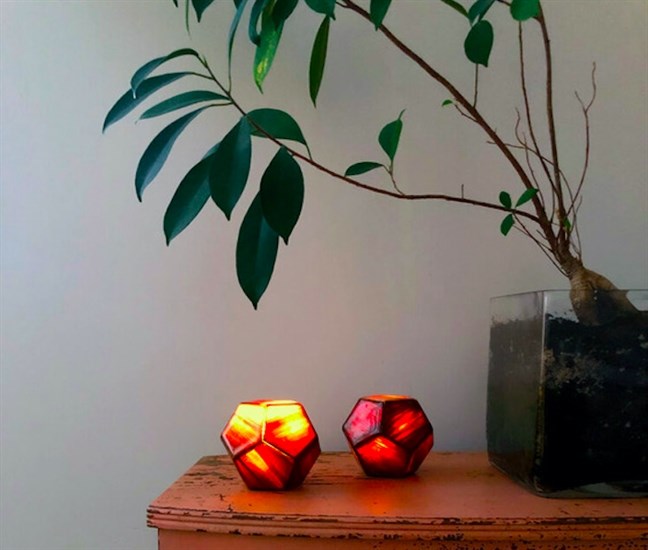
Melany Nugent-Noble is Kelowna's first Artist in Residence and is creating 'When it is necessary to stand still' this summer.
Image Credit: Submitted/Melany Nugent-Noble
July 04, 2020 - 6:00 AM
In the age of COVID-19, it’s harder than ever to connect with people you pass on the street.
A unique Kelowna art project will change that for a couple of hundred people, even though the ideas behind it date back at least five years and the artist who created it never envisioned the current pandemic.
“It was in 2015 when I first put pen to paper,” Melany Nugent-Noble, who calls herself an interdisciplinary artist, told iNFOnews.ca. “I was thinking about the way we move around our communities – the anonymity. We always have headphones in or we’re looking at our phones. There’s less of an opportunity to connect to those who we share our neighbourhoods and our communities with.”
Nugent-Noble, who grew up in Edmonton and now lives in Kelowna, was a Masters student at the Emily Carr University of Art and Design in Vancouver at the time but the idea sat on the backburner for awhile as she, first of all, had to develop the technology to create her vision through portable beacons.
Called When it is necessary to stand still, this is Kelowna’s first ever artist in residence program and will run over 12 weeks this summer, starting next week.
The first phase will have Nugent-Noble create 25 hand-held 12-sided beacons, each about the size of a baseball.
She will ask 250 people, in groups of 10, to volunteer to carry a beacon with them for a three-day period. The beacons can detect other beacons anywhere within an eight kilometre radius. As more are detected and they get closer, the beacons change colour, turning to a bright white light when they are all together.
The eight kilometre radius is customized for Kelowna so most beacons will be within range of others during the day. It’s 7.6 km between Knox Mountain and Gyro Beach or 8.2 km from City Park to Rutland.
They are equipped with GPS devices so Nugent-Noble can collect data on how they travel but that’s for a later stage of the project.

Image2 The beacons can be left in one place or carried around as participants go about their daily business.
Image Credit: Submitted/Melany Nugent-Noble
There are no rules for how people are expected to handle their beacons.
“I don’t want people to think, oh they have to do this or they have to be out with it for eight hours a day or anything like that,” Nugent-Noble said.
One person may just like the thought of a beacon sitting on their kitchen table changing colour as others move about in the community.
“On the other hand, people may want to be more active and take it with them and maybe have a chance encounter with someone else who has a beacon or respond to it in whatever way,” she said. “I’m excited to see how people react to it and engage. I have ideas that people might connect and there may be some sort of game but COVID might play a role in how people use them.”
There will be a follow-up session of some sort so participants can share their experiences but Nugent-Noble still has to sort out how that will work.
Part of the thinking behind the project is to show people how technology can be used to break down barriers and make new connections with people.
This is a work in progress so all the details will be worked out as it develops. Plus the data collected could be used in numerous ways well into the future.
The beacons will be kept for future activations in the city, such as by schools or other organizations.
Nugent-Noble created the beacon prototype using existing technology but will be refining them in coming years to make them a “more wearable size,” noting that this project is only their first activation.
The registration for participants has not yet opened but go here for more information and to put your name on the list for updates on when registration will start.
Activations are scheduled to take place between Aug. 24 and Sept. 26 in 10 sessions of 25 people.
The Artist in Residence program has a total annual budget of $15,000, with $12,000 going to the chosen artist.
To contact a reporter for this story, email Rob Munro or call 250-808-0143 or email the editor. You can also submit photos, videos or news tips to the newsroom and be entered to win a monthly prize draw.
We welcome your comments and opinions on our stories but play nice. We won't censor or delete comments unless they contain off-topic statements or links, unnecessary vulgarity, false facts, spam or obviously fake profiles. If you have any concerns about what you see in comments, email the editor in the link above.
News from © iNFOnews, 2020